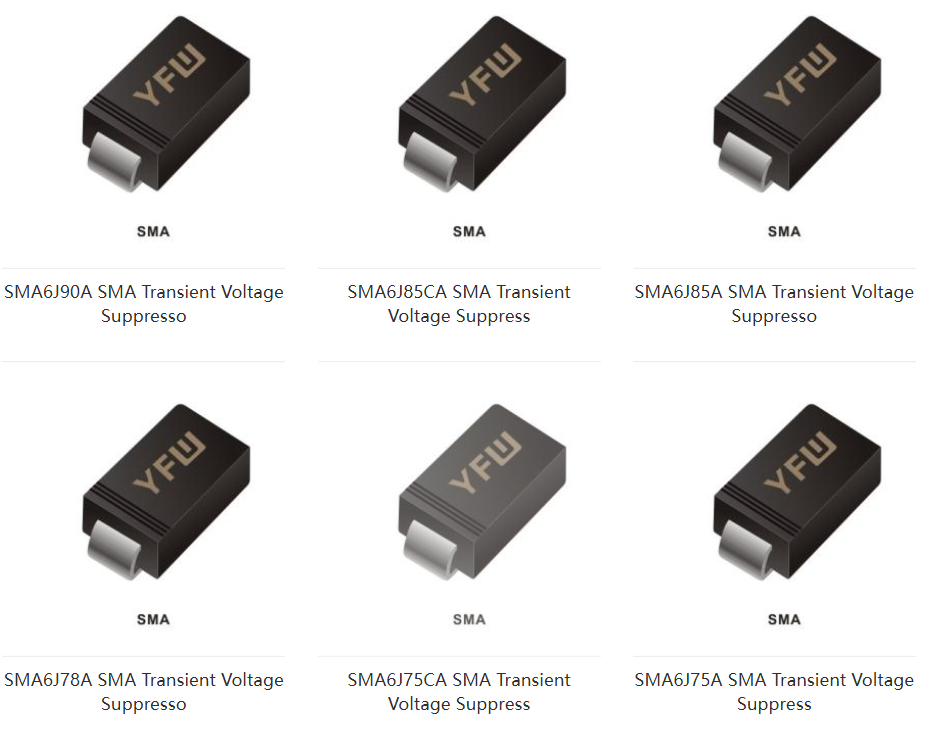How to distinguish between one and two directions of TVS transient suppression Diodes.
1. Look at the model. We can judge from the surface of the model that although different brands have different naming methods, they all have a rule: with An is an one-way diodee, CA is a two-way diodee.
2. if you look at the specification, it is usually on the first page. < 1 > bi-directional conduction is bi-directional, < 2 > unidirectional conduction.
3. Measure with a multimeter.
< 1 > measure the gear of the diode with one side pass in one direction and voltage on both sides.
< 2 > DC measurement, bi-directional symmetry, unidirectional only reverse avalanche breakdown characteristics, general 1mA down test.
4. All TVS transistors will have a cathode line after amplification, which is used to distinguish the positive and negative poles of the diode, independent of one or two directions.
2. Differences in one-way / two-way use.
1. One-way is used in DC. Bi-directional tvs transistor protection devices can only protect positive or negative pulses, while bi-directional tvs transistor protection devices are connected to one end of the protective device.
When one end of the line is grounded, both the reverse and forward ESD pulses are released, which protects the IC more effectively.
2.TVS transistors can be divided into unidirectional and bidirectional transistors. The forward characteristics of unidirectional TVS transistors are the same as those of ordinary Zener diodes, and the hard breakdown at the reverse breakdown inflection point is typical.
PN has an avalanche. When there is an instantaneous overvoltage pulse, the current of the device increases rapidly and the reverse voltage rises to the clamp voltage and remains at this level. Vmuri characteristics of Bidirectional TVS transistors.
The curve is like a combination of two unidirectional TVS "back to back". It has the same avalanche breakdown and clamping characteristics in both directions, and the symmetrical relationship between the breakdown voltage on both sides is.
0. 9 ≤ VBR (positive) / VBR (negative) ≤ 1.1. As soon as the interference voltage at both ends of it exceeds the clamp voltage, Vc will be suppressed immediately.
3. Interpole capacitance Cj.
The unidirectional capacitor C is larger than the bidirectional one. Take the LRC as an example, the unidirectional capacitor C has 65PF, and the bidirectional capacitor only has 15PF.
Two-way for all use on 4.USB data line.
5. The current curve is different. The circuit symbol of unidirectional TVS transistor is the same as that of ordinary voltage regulator, its forward characteristic is the same as that of ordinary diode, and its reverse characteristic is a typical PN junction avalanche device. Both forward and reverse diodes are typical PN junction avalanche devices.

Contact: Emma Tan
Phone: +8613650089053
E-mail: emma@yfwdiode.com
Add: No.9 Cuibi street,Nancheng,Zhang mutou town,Dongguan City,Guangdong Province